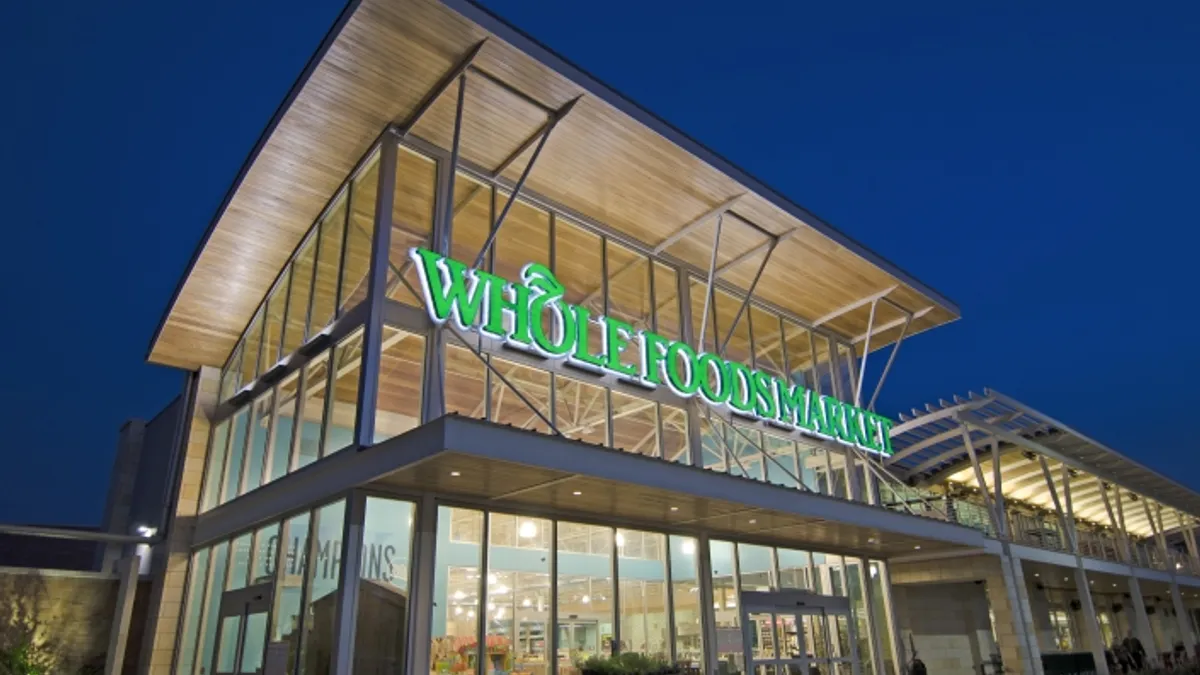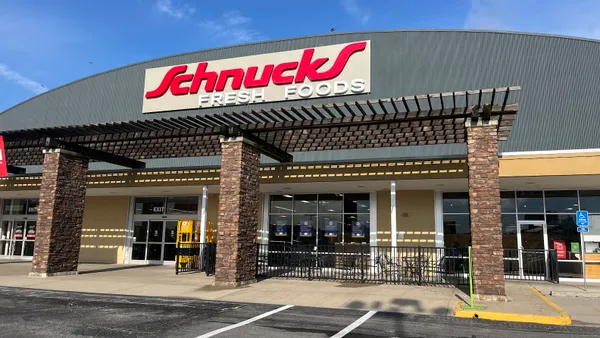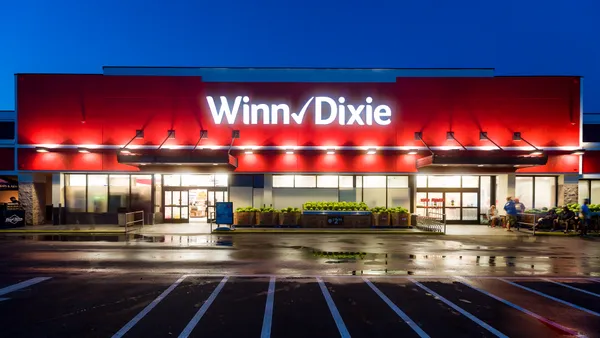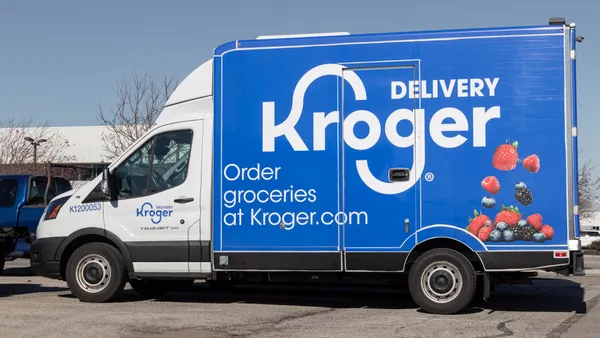Dive Brief:
- Whole Foods Market foot traffic fell sharply at the outset of the pandemic and continues to lag behind its year-ago numbers despite strong recoveries from competitors such as Trader Joe’s, a new Placer.ai report noted.
- In contrast with Trader Joe’s, which effectively managed a decline in casual visits by positioning itself as a go-to-grocer for loyal consumers and longer visits, Whole Foods’ average visit length has remained mostly the same in the past six months, with visit frequency faltering. Whole Foods saw a more than 33% decline in visits from March through September compared to the same time period last year, and its foot traffic remains below 20% year-over-year while Trader Joe's has almost fully recovered.
- The report, which tracked location data among more than 15 major grocery brands, noted that 37% of consumers are spending more per trip on groceries, translating to expanded basket sizes critical for Trader Joes’ sales recovery.
Dive Insight:
Among the shopping trends indicated in Placer.ai’s October report was that shoppers are less put off by traveling longer distances from home, particularly if it means they can buy everything on their list. Compared to 2019, where Whole Foods stores received more visits at both a one-mile and 100-mile radii than equivalent distances from Trader Joe’s stores, Whole Foods saw a marked decline in store visits by customers living further away. Trader Joe’s, by contrast, saw consistent visits in its trade area after the onset of the novel coronavirus pandemic.
Placer.ai concluded that Trader Joe's has done a better job than Whole Foods at adapting to the "mission-driven" shopper mindset by offering products and merchandising conducive to efficient stock-up buying. Although visits declined for both grocers early in the pandemic, Trader Joe's drove larger baskets and longer visit times than Whole Foods, which eventually translated into greater traffic frequency. Trader Joe's also didn't see a drop off in visits from loyal shoppers compared to 2019, while Whole Foods saw a slight dip.
Whole Foods, bought by Amazon in 2017, has attempted to bridge the visits gap with a rapid expansion of online ordering services this year. On Wednesday, the grocer announced that it has rolled out pickup services to all 487 of its U.S. locations, free to Amazon Prime members for baskets of $35 or more. Amazon.com is also targeting ads for two-hour Whole Foods delivery toward Prime members in almost 30 U.S. cities, according to a recent Bloomberg report.
But the surge in online operations hasn’t made up for Whole Foods’ decline in store visits, which remains below 20% compared to last year's levels. Earnest Research data cited by Bloomberg notes that Whole Foods sales are up around 10% this year, but traditional grocers have seen significantly higher sales growth.
While Whole Foods’ foot traffic fell, family-oriented, traditional grocery stores like Winn-Dixie, Albertsons and Meijer all documented increased year-over-year increases in visits from March through September. Trader Joe's had the second steepest drop in year-over-year visits, with a 16% decrease, while the other nine other grocers Placer.ai tracked fell between 1.5% to just under 10%.
Whole Foods, hindered by its legacy upscale positioning, also had made investments last year in its prepared foods offerings catering to office workers. Trader Joe’s on the other hand, has led the industry along with Wegmans for consumer satisfaction during the pandemic, according to the latest data from the American Consumer Satisfaction Index.









